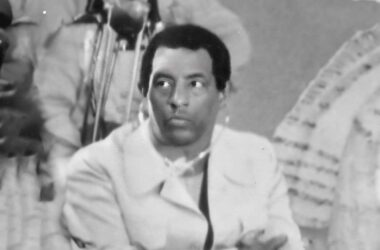
At the core of any viable performance management system is Performance Assessment. In this regard, both the employee and the manager are responsible for evaluating the extent to which the desired results have been achieved. In that regard, the manager completes his/her appraisal of the employee and the employee fills out his/her appraisal of himself/herself. Doubtless, employee involvement in the process increases employee ownership of and commitment to the system.
Integral, therefore, to any reliable assessment of performance is the Appraisal Form which usually includes a combination of the following components, namely
Ø Basic employee information: job title, division, pay grade, dates of evaluation period
Ø Objectives: objectives agreed upon between manager and employee and the extent to which the objectives have been achieved. Objectives are weighted in terms of degree of importance.
Ø Developmental achievements: this section includes information on the extent to which the developmental goals set for the review period have been achieved i.e. attendance at workshops/seminars, training courses undertaken and results, new skills learned.
Ø Developmental needs, plans, and goals: this section of the Form is future oriented and includes information about specific goals and timetables in terms of employee development.
Ø Employee comments: this section includes reactions and comments provided by the employee being rated. This section helps also with legal issues because it documents that the employee has had an opportunity to participate in the evaluation process.
Ø Signatures: this final section includes spaces in which the employee being rated, the rater, and the rater’s supervisor provide their signatures to show that they have seen and discussed the content of the Form.
Next up is the Performance Review during which employee and manager/supervisor will meet to review their assessments. This is the appraisal meeting during which the employee receives feedback on his/her performance. Providing feedback in an effective manner is extremely important because it leads not only to performance improvement, but also to employee satisfaction with the system. The conversation should include a discussion of goals and development plans that the employee will be expected to achieve over the next period before the next review season. The session should also include information on what new compensation, if any, the employee may be receiving as result of his/her performance.
Clearly, there must be an agreed time during the year when performance reviews take place. They are usually conducted monthly, quarterly, semi-annually, or annually depending on the size of the organization.
Equally, the Performance Review must have as its basis Performance Standards: the yardsticks designed to help people understand to what extent the objective has been achieved. The standards provide raters with information about what to look for to determine the level of performance that has been achieved. Standards must include an action, the desired result, a due date, and a quality or quantity indicator. In essence, performance standards must be Specific, Measurable, Attainable, Relevant, and Time-bound i.e. SMART.
It is only after the Performance Review has been concluded that a Personal Development Plan can be designed and developed. Personal development plans specify the courses of action to be taken to improve employee performance. And these are courses of action agreed to by manager and employee. The overall objective of development plan is to encourage continuous learning, performance improvement, and personal growth. The plan will include
Ø Steps to be taken and specific objectives to be reached;
Ø Activities that will be conducted to reach those new objectives;
Ø New skill or knowledge that will be acquired; and
Ø Completion date.
Unlike the other elements hitherto referred and which are time-bound, Giving Feedback and Coaching are continuous
Feedback is information that is given with the goal of improving ongoing and future performance. Feedback includes information about both positive and negative aspects of the job performance and lets employees know how well they are doing with respect to meeting the expected standards. It serves such important purposes as
Ø Help build confidence: praising good performance builds employee performance;
Ø Develop competence: communicating clearly about what has been done right and how to do the work correctly helps employees become more competent;
Ø Enhance involvement: assisting employees in understanding their roles in the organization and so become more involved therein.
Coaching is a collaborative, ongoing process in which the manager interacts on a regular basis with his/her employee and takes an active role and interest in the employee’s performance. In general, coaching involves directing, motivating, and rewarding employee behavior. Coaching is concerned with long-term performance and involves ensuring that the development plan is being achieved. It turns feedback into results. Coaches need, therefore, to engage in the following
Ø Establish development objectives jointly with the employee.
Ø Maintain regular and clear communication with the employee.
Ø Observe employee behavior and document results.
Ø Measure employee performance and give feedback.
Ø Diagnose performance problems by listening to employees and gathering information to ascertain the source(s) of any performance deficiencies.
Ø Develop the employee by providing resources for his/her development and helping him/her plan for the future.
Now top management may ask “Why is performance management important?” A possible response to that question is that performance is the primary tool to successfully carry out the vision of the organization. Once the system is aligned with the organizational goals and priorities, it allows employees to clearly understand where the agency or entity stands and where it is heading. In this way, worker motivation and job satisfaction are ensured. Workers will know that their contribution to the furtherance of the objectives and strategic plans of the organization is recognized and appreciated.
The next issue will look at the Benefits and Pitfalls associated with a Performance Management.
[The writer, Mallet Edwards aka HAMMER, is a former Lecturer in Human Resources Management in affiliation with the Australian Institute of Business (AIB) and the London School of Management (LSM) through St. Lucia’s National Research and Development Foundation (NRDF)]












